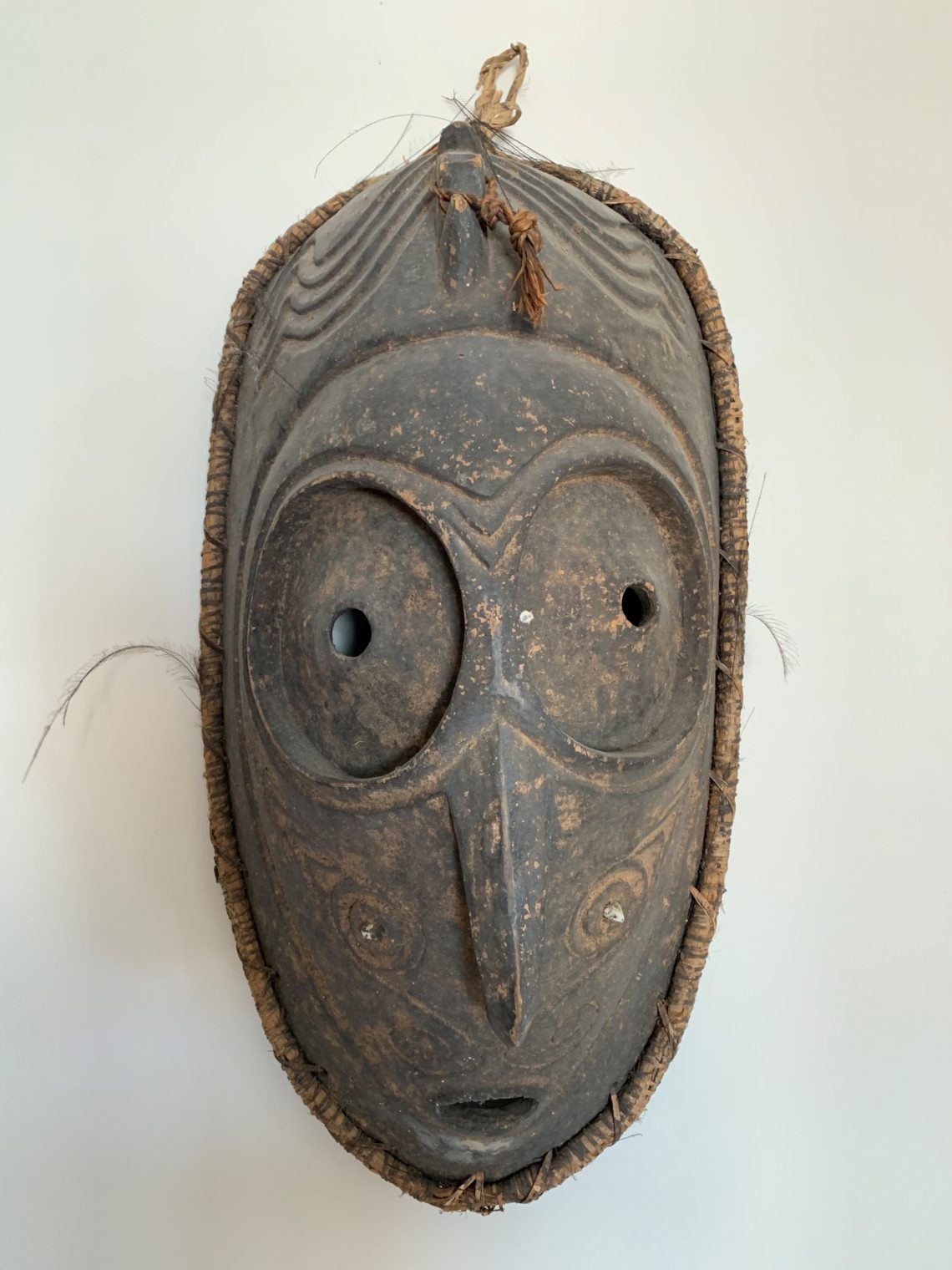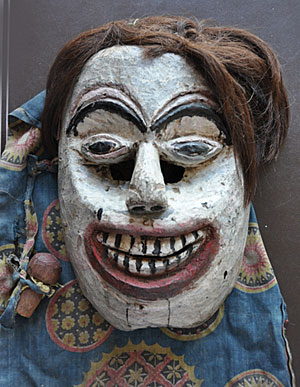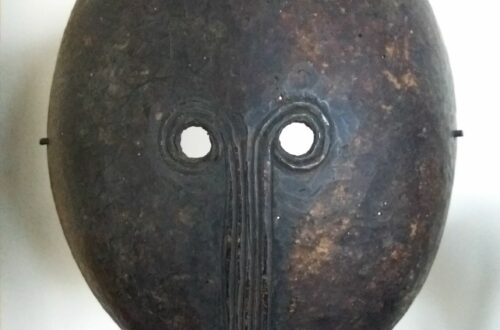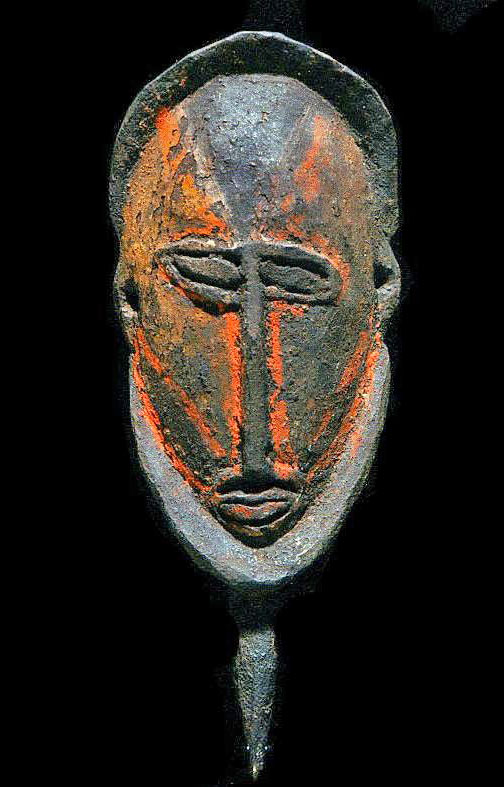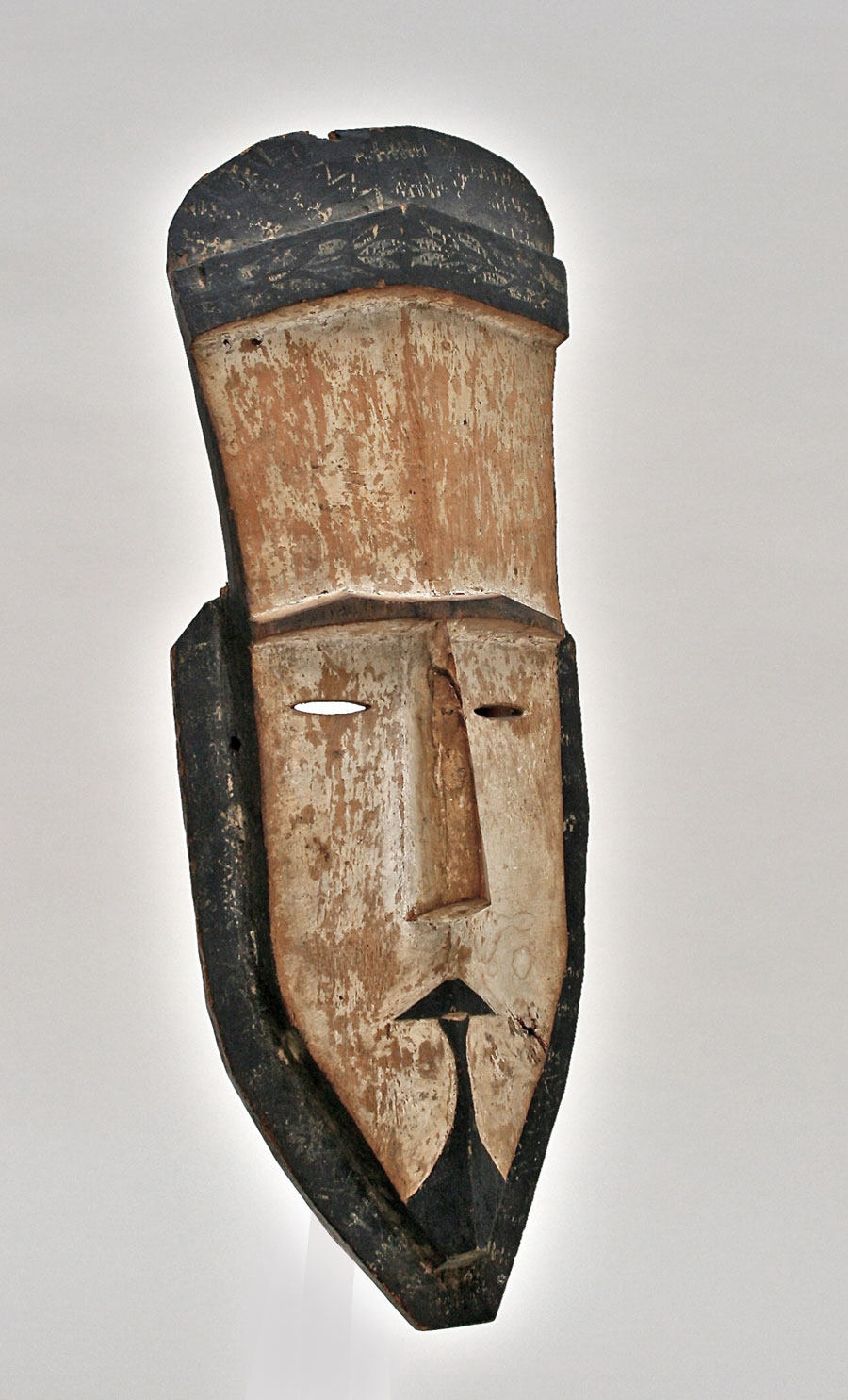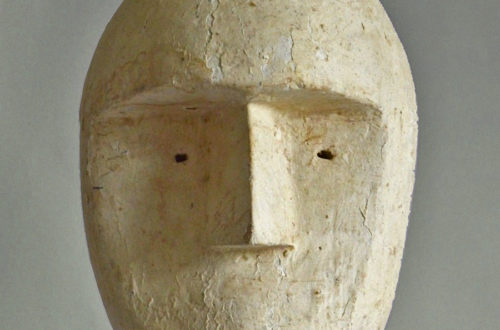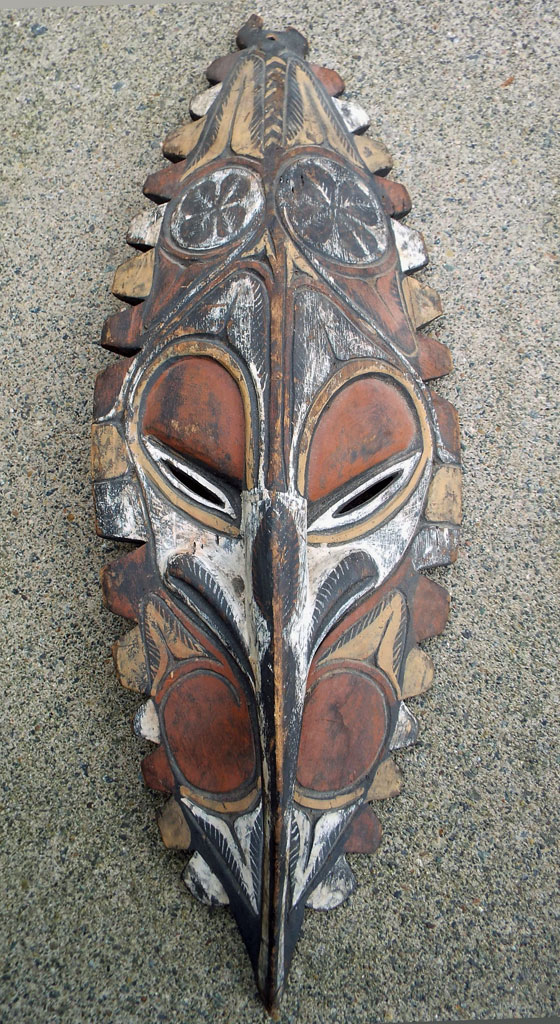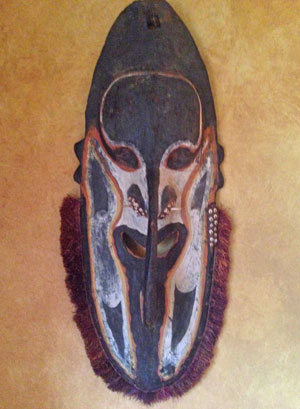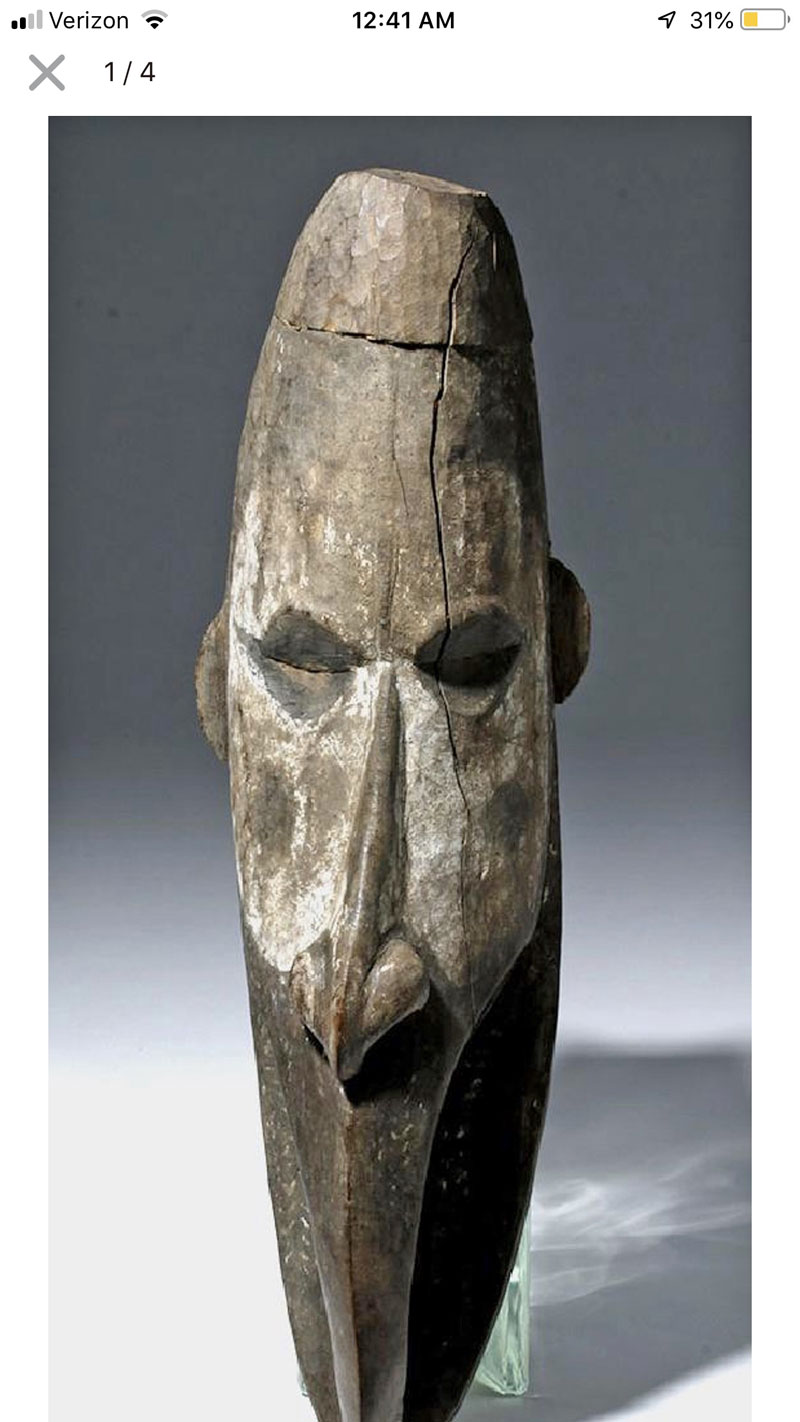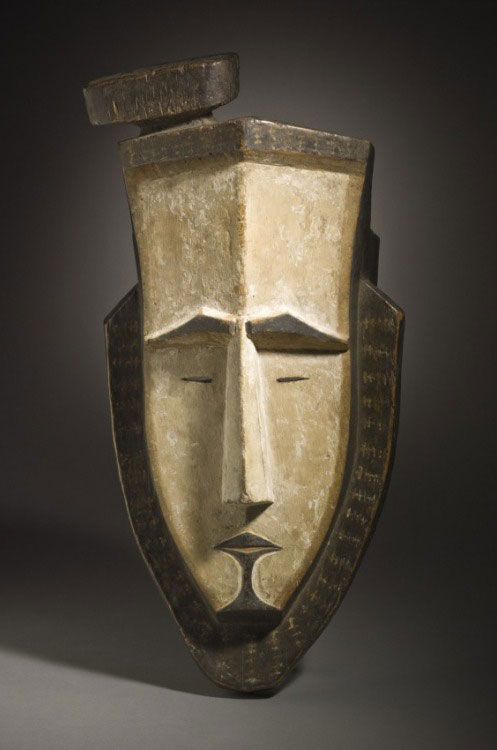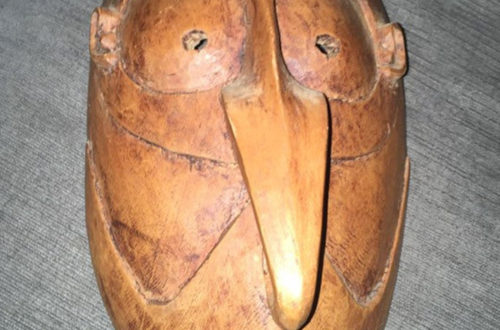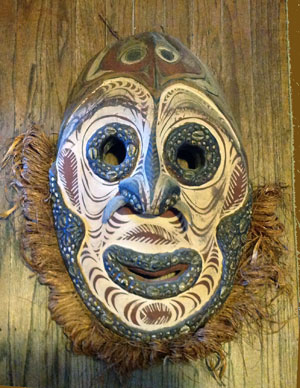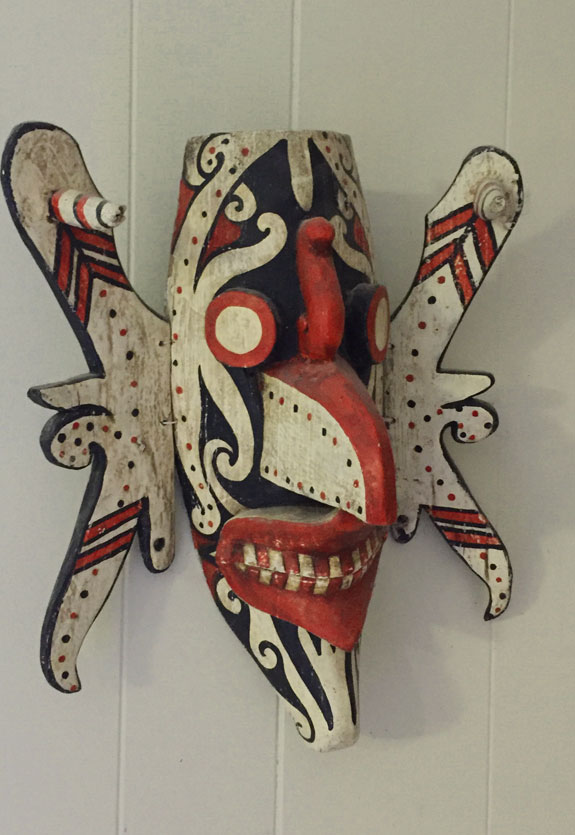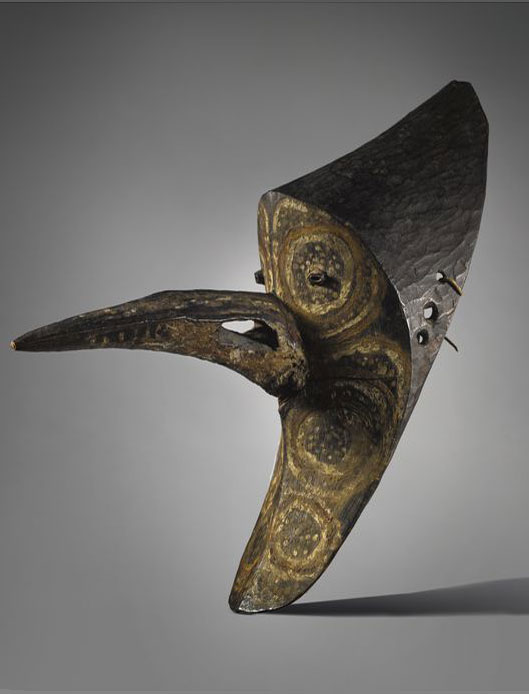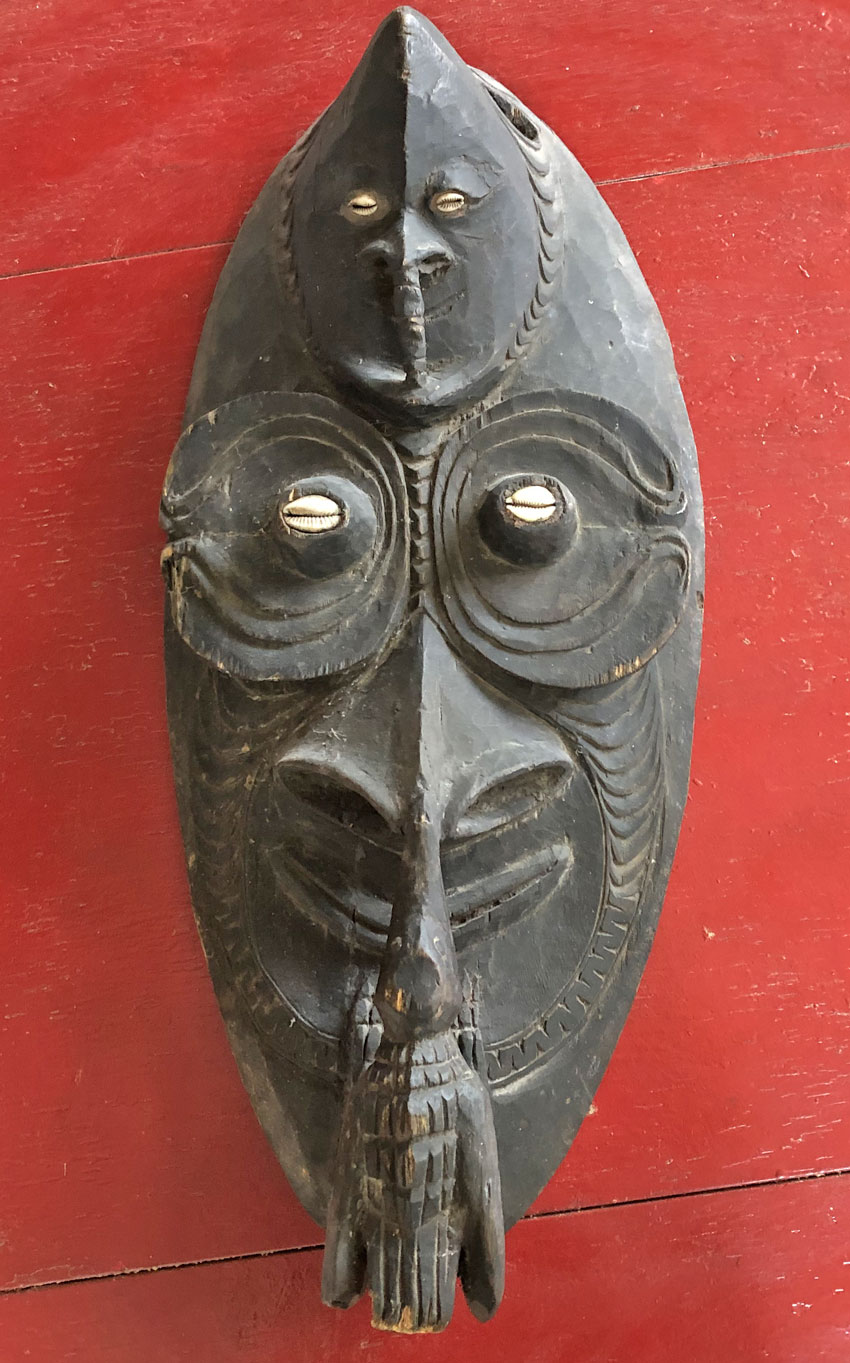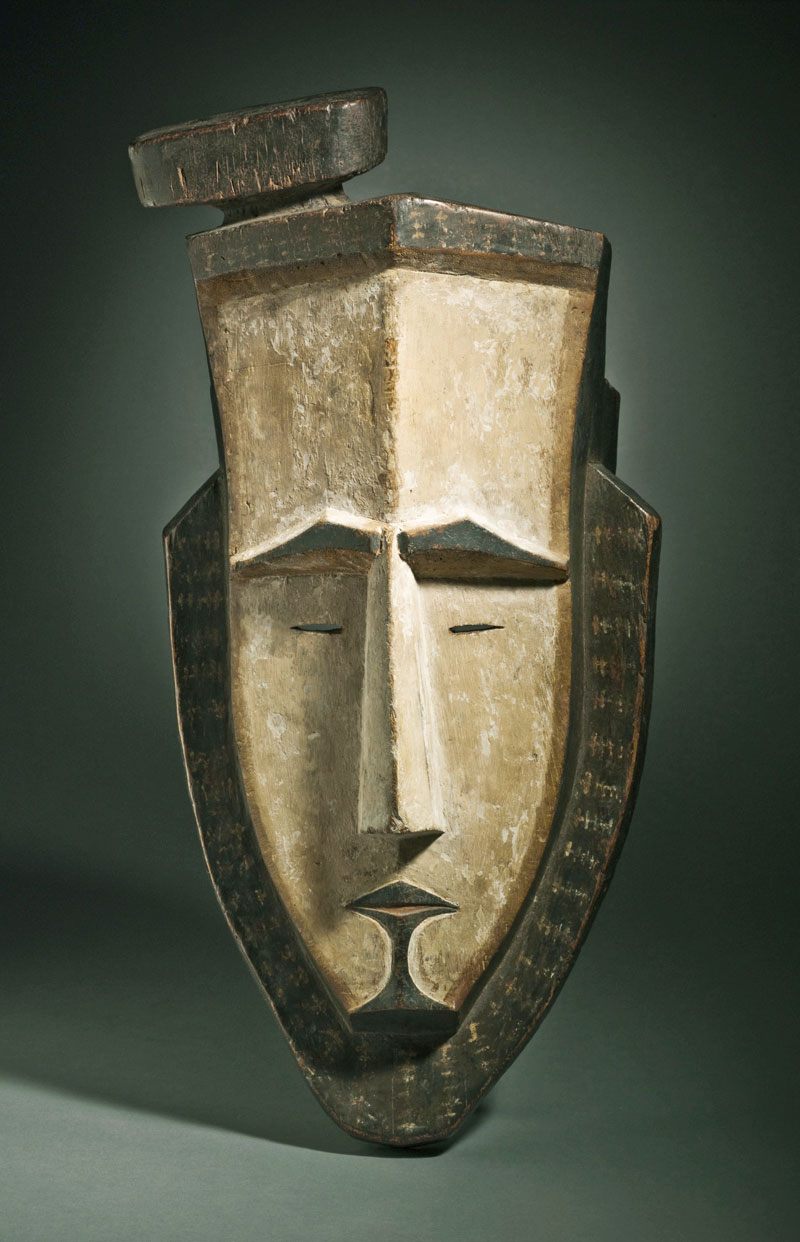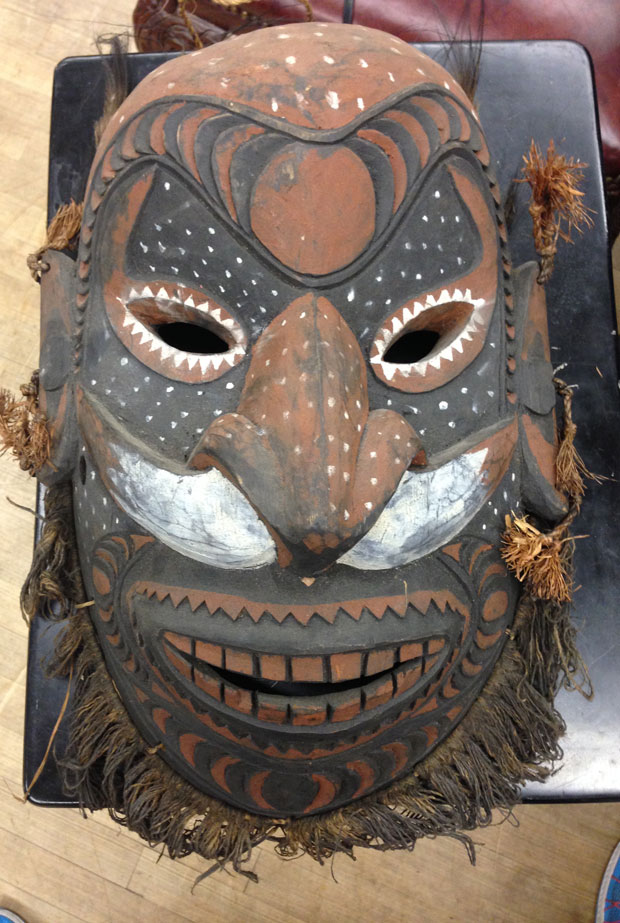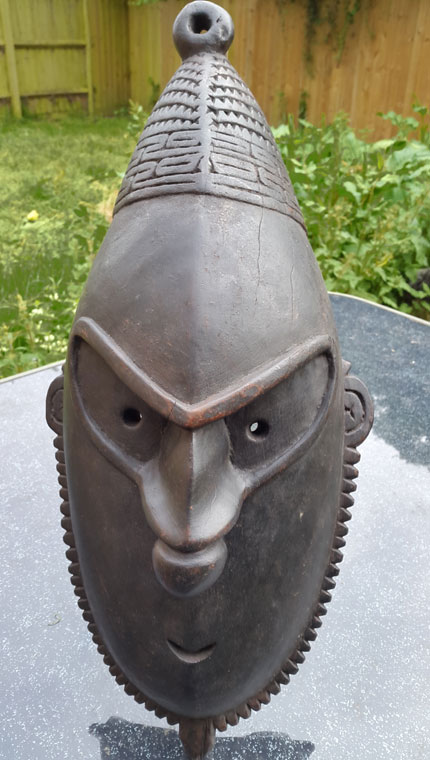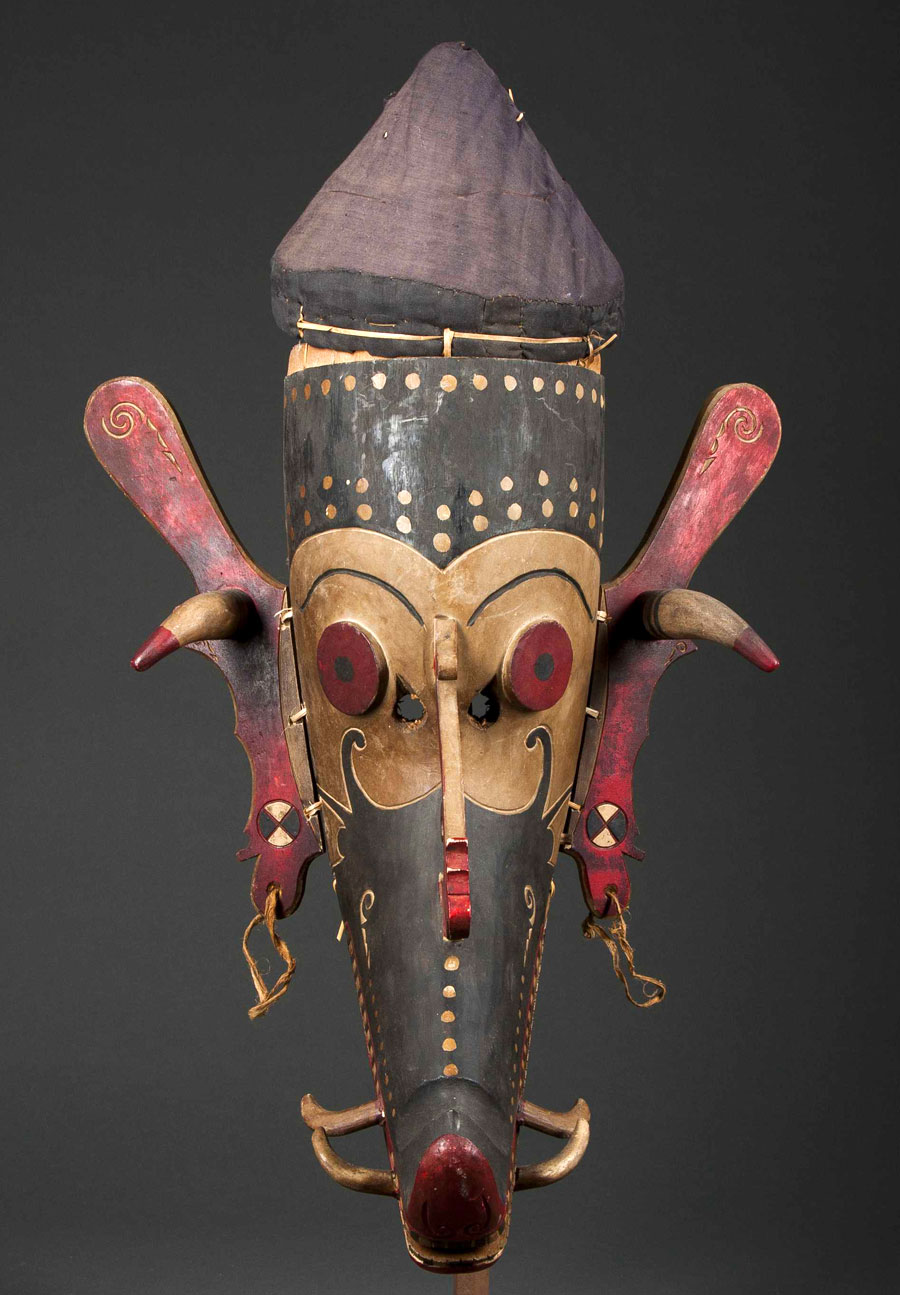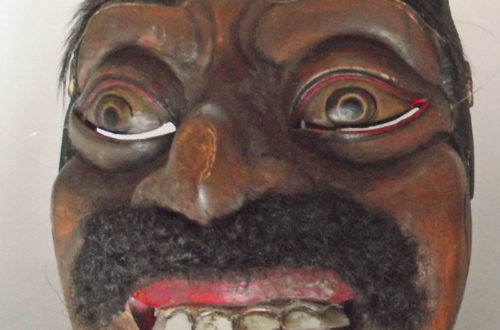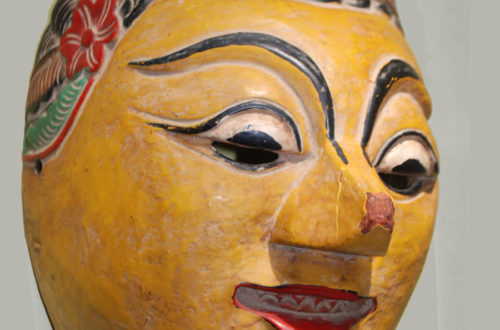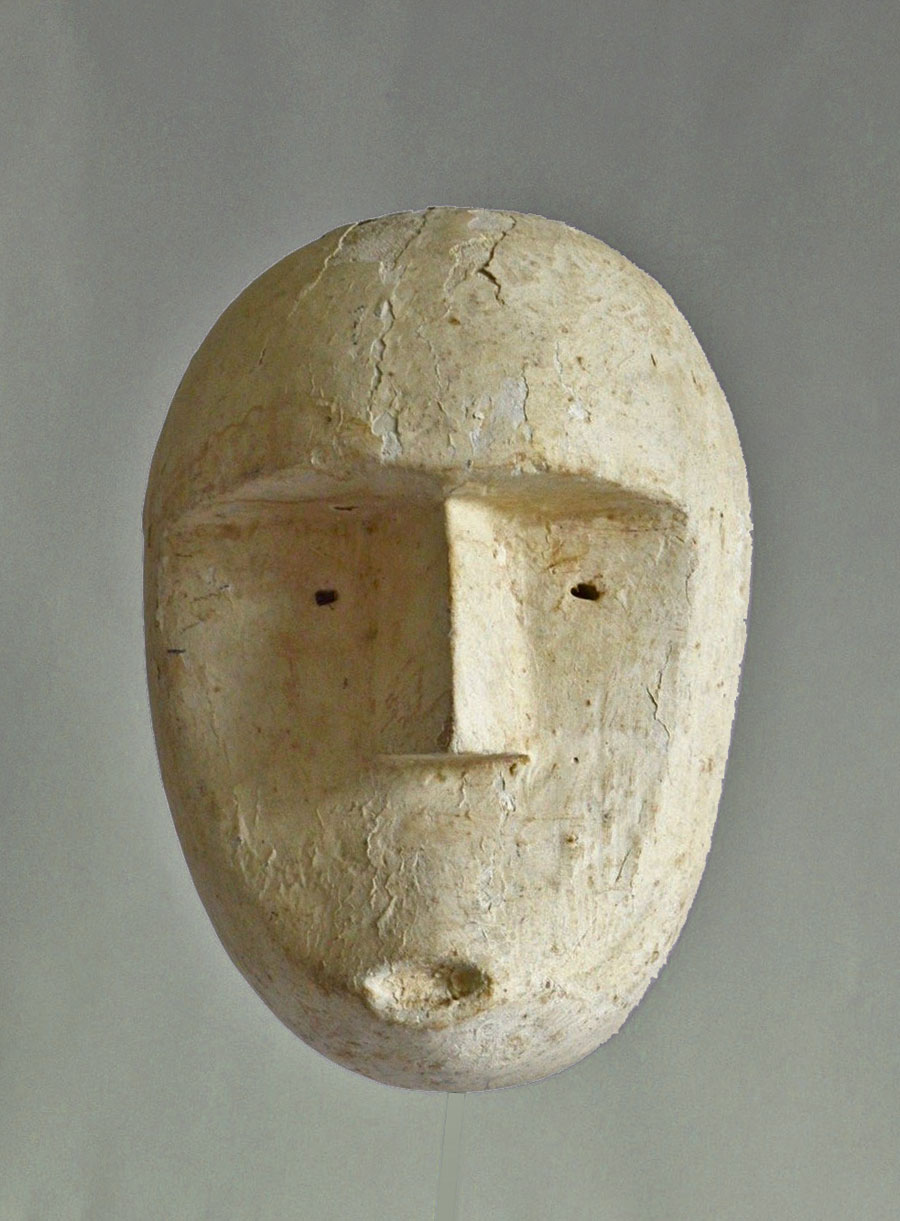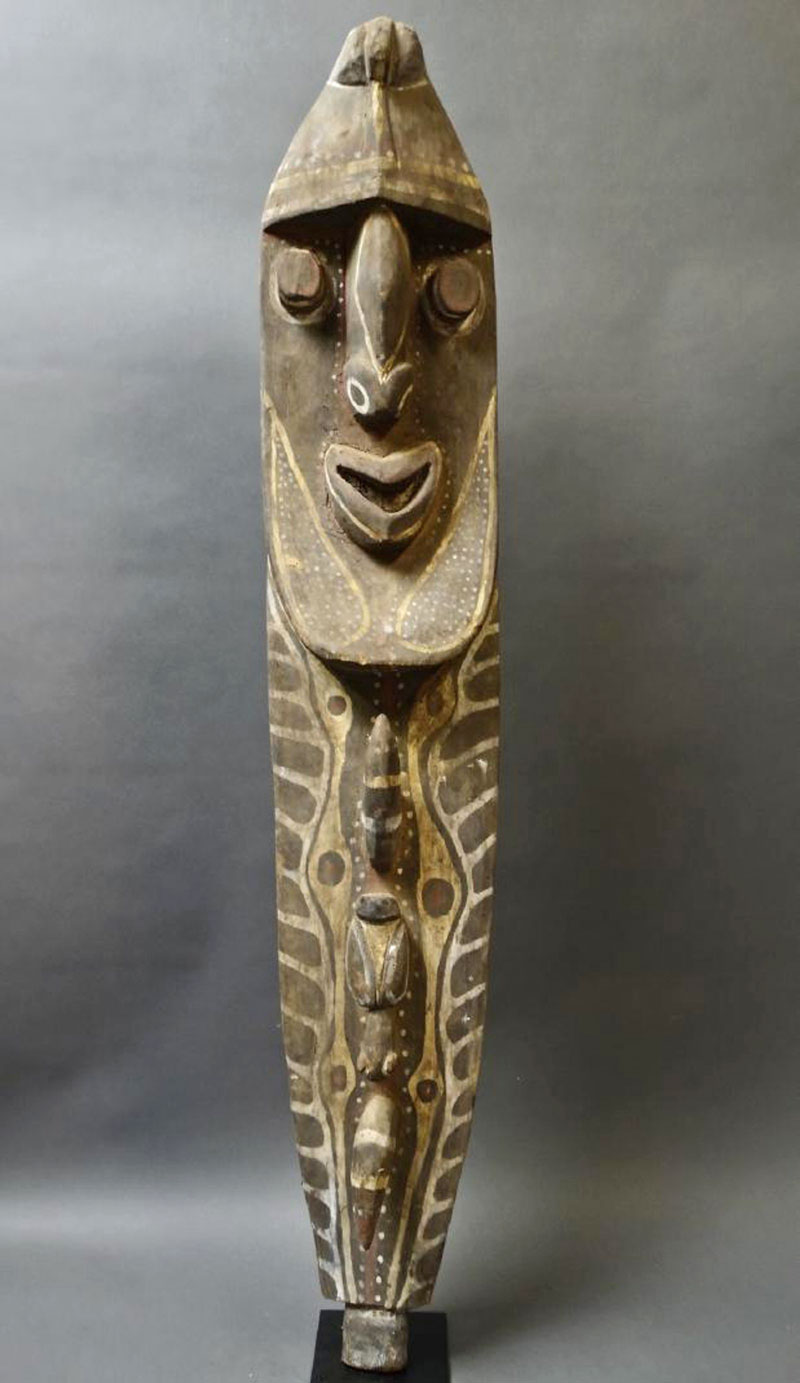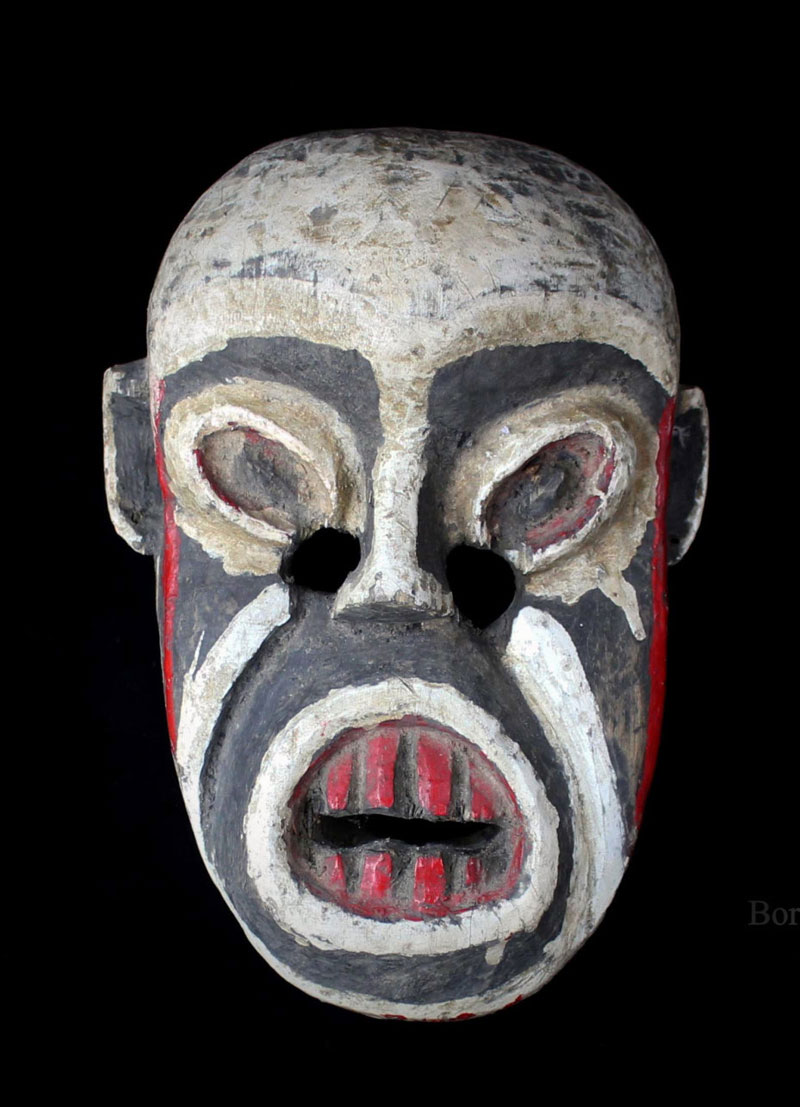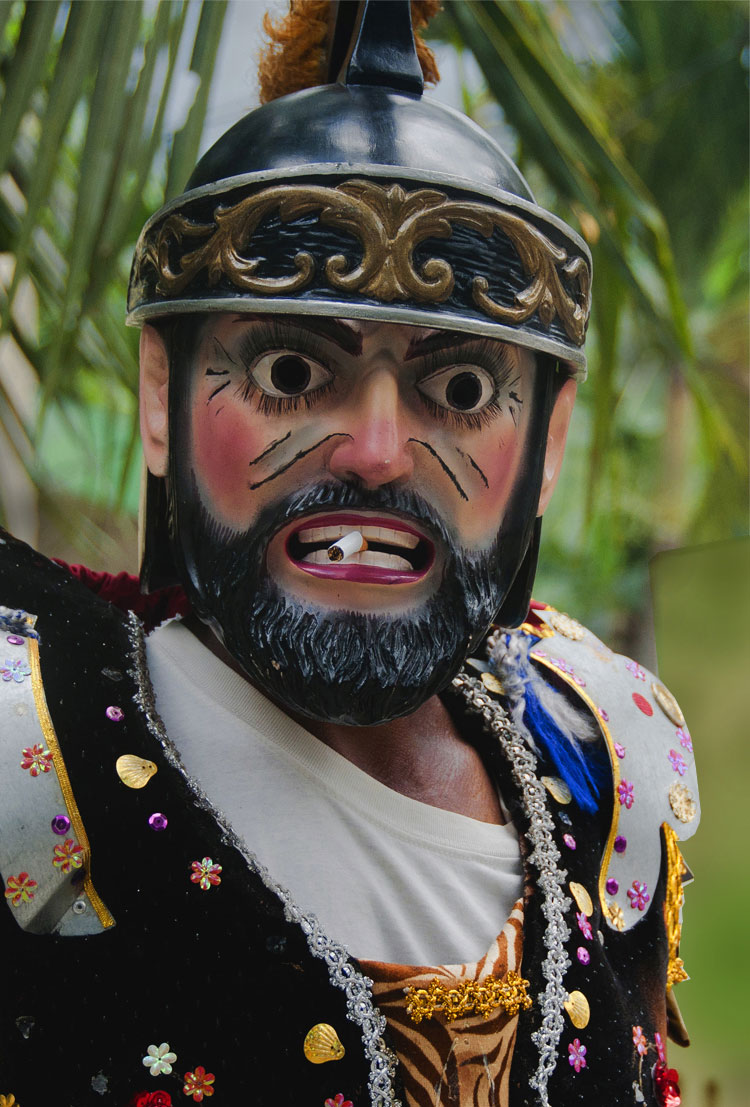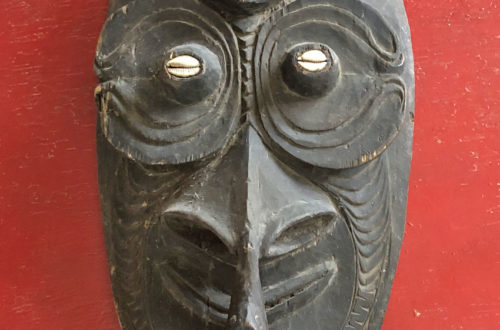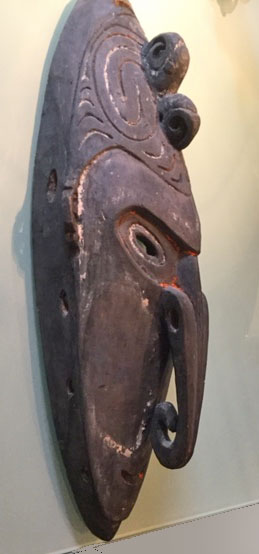Q: Bought on ebay as Ramu ancestral mask for 225USD. It could be also from the Lower/Middle Sepik River area of Papua New Guinea. Seller claimed that it was collected in the 1970s. Wood, natural fibres, very worn off cassowary feathers and a couple of tips from what it appears to be bore tasks used as a decoration of the cheeks. 64 cm tall. Vesselin, 1618 A: I think it looks good and may be authentic. Check it carefully to see if carved with natural tools or steel. There were still a few areas in PNG not visited by Westerners in the 1970’s. Or it could be an excellent reproduction.…
-
-
Micronesian mask from Mortlock Islands
What you see here is an authentic mask from the Mortlock Islands, Micronesia, and it just fetched $2000 at auction. Micronesia is a large area of the world that is composed of thousands of small islands in the western Pacific Ocean. It has a closely shared cultural history with two other island regions: Polynesia to the east and Melanesia to the south. However, the Mortlock Islands are the only place were masquerade is performed in the region and all of their masks resemble this one. People like me, who collect masks from all over the world, feel it is important to have one of these in our collection because no…
-
Is this PNG mask really old?
Q: Described as a late 19th to early 20th century gable mask from Papua New Guinea. What are your thoughts on quality/value/authenticity? Acquired from Artemis Gallery (ex-Adeon Gallery). Jon, 1597 A: You asked about quality, value and authenticity. The quality, (if that means appearance), is very good in my personal opinion. The value would depend on whether it was carved with natural tools or steel tools. It is very difficult for me to answer this when I can only look at 72dpi scans. Notice that the rear of this very traditional Sepik River area mask is flat. That is because many of the various ethnic groups also use masks to…
-
Q: Described as a late 19th to early 20th century gable mask from Papua New Guinea. What are your thoughts on quality/value/authenticity? Acquired from Artemis Gallery. Ex-Adeon Gallery. Jon, 1597 A: This appears to be an old mask from the Sepik River area of Papua New
-
Ask the Mask Man or professional appraisal
Q: Got this from a dealer in Port Moresby. I would like to know its authenticity, value and where/tribe it came from. Old or new? After my answer, John wrote… I am interested in an appraisal, and information on where the mask is from (in Papua New Guinea) whether it is an authentic mask that was used in ceremonies, and whether it is particularly valuable. John, 1575 A: The answers that are posted on this site usually show 3 good photographs of the mystery mask, some interesting background info, and an A, B, C, D evaluation with can roughly suggest its value. An appraisal describes the mask, talks about marketing…
-
Dayak hudoq mask
From the Dayak people of the Kalimantan portion of Borneo, the mask is a classical style hudoq depicting a mythical boar, bird and dragon; the face painted in red, white and black, with attached ears, the lobes with remains of fiber cord that once held pendant ear decorations. It is 25 inches high and has never been used. It came from the Cobbs Auctioneers, a company that often comes up with high-quality masks that are not terribly expensive. Can someone explain why a mask of this quality would be antiqued on the front and not the rear?
-
Timorese mask
I’m posting this because I like it so much. Traditional masks that rely mostly on carving can result in very fine sculptures. There are examples of this in Africa and indigenous cultures around the world, but they are rare compared to masks with color or adornments. Timor is an island in the South Pacific under Sulawesi and the Moluccas. Half of the island is the eastern end of Indonesia. Masks and other tribal arts are still being made there. This one would be old and used for celebrating an ancestor or communicating with spirits. Full disclosure– I am an artist, not an anthropologist.
-
New Guinea wood carving
Q: I recently acquired a PNG yam ceremony carving from the Netherlander and remembered that you had a yam god mask posted on your website. Maybe you are not interested in carvings but I figure I will share them with you and as always, I’m very interested in hearing your opinions. Photos are stock, carvings are currently in transit. David, 1376 A: Your carving is certainly from Papua New Guinea and a very handsome piece of folk art. I’ve never seen a yam mask this long and narrow. How tall is it? What is that little knob for on the bottom? Perhaps you can find someone who specializes in PNG or oceanic…
-
Dayak shaman’s mask from Borneo
Unlike the red, white and black Hudok masks with their long beaks and wings, the shamans’ come in different colors and designs. They can also be rather plain with little or no color.The Iban people are one branch of the Dayak tribe of Borneo. Another large group is the Bidayu culture which occupy the region of Sarawak. Actually, the second photo is a hunters mask. You can see more Borneo masks, including the famous Hudok, in our “Oceanic” category.
-
The only Micronesian mask
Masks are very rare in Micronesia. Traditionally they are only found on the Satawan Atoll in the Mortlock group of islands. (Melanesia and Indonesia have thousands of different masks.) This typical example is made of breadfruit wood painted white using lime and black using soot. This wood mask has narrow eye-slits and a plaited coconut fiber cord for securing it to the wearer’s head. It is over 100 years old. Such masks represented an ancestor. They were used as ornaments in the ceremonial house and sometimes in boat houses. The ceremonial house was the location of performances by members of a secret society, in which the god of wind was…
